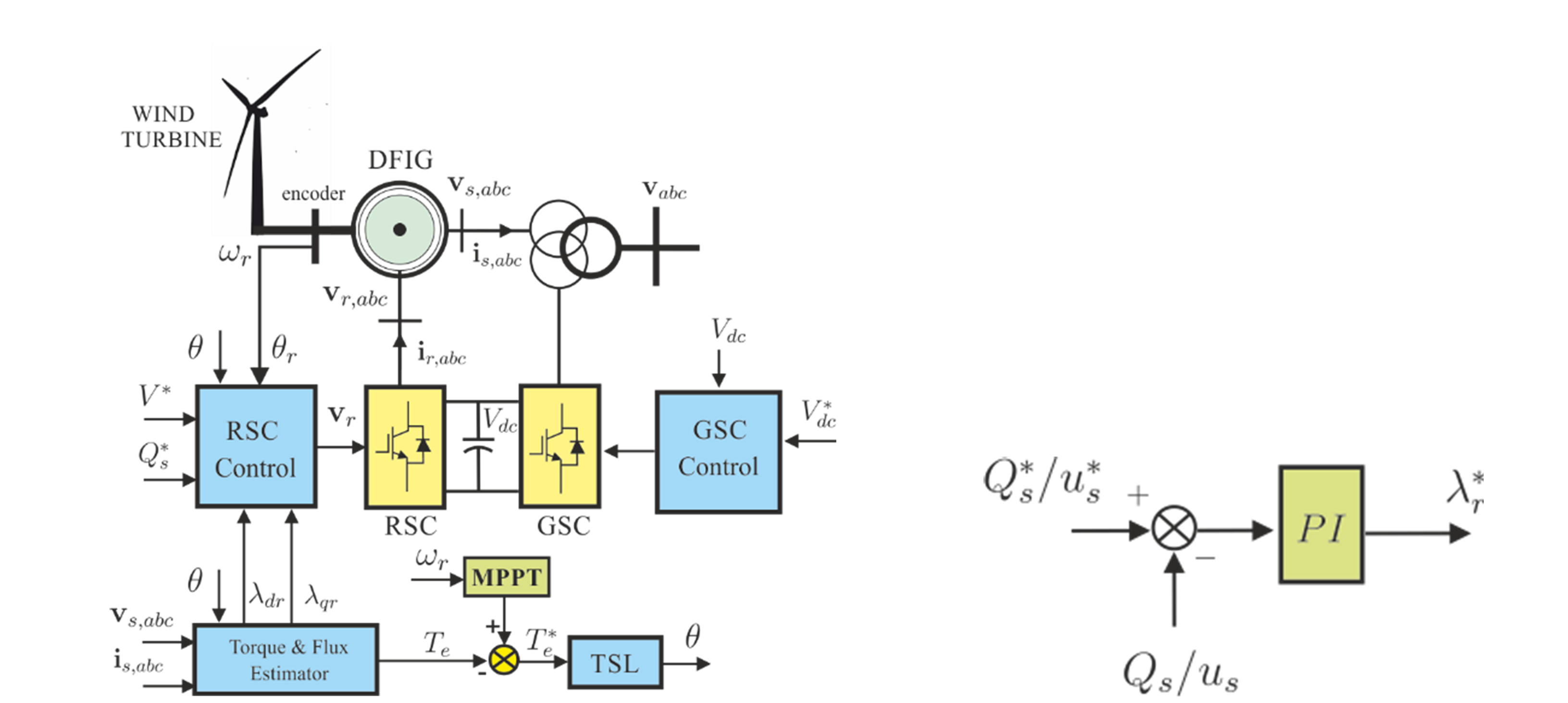Summary
- Profile Type
- Technology offer
- POD Reference
- TOES20240902012
- Term of Validity
- 3 September 2024 - 3 September 2025
- Company's Country
- Spain
- Type of partnership
- Commercial agreement with technical assistance
- Research and development cooperation agreement
- Targeted Countries
- All countries
Contact the EEN partner nearest to you for more information.
Find my local partner
General information
- Short Summary
- A Spanish university has developed a control system for doubly fed asynchronous generators (DFIG) in wind turbines. This Grid-Forming system mimics synchronous generator features, enabling inertia emulation, autochthonous start and island operation. It improves efficiency and adapts to electrical network needs. To advance from TRL 4 to market readiness, the university seeks manufacturers of wind turbine or its generating equipment for further development and licencing the technology to them.
- Full Description
-
The increasing penetration of renewable energies into the grid necessitates new control schemes for generation systems. These systems have evolved from grid-following, which provide constant power, to grid-supporting, which offer network services. Studies indicate that renewable generation must act as true voltage sources to maintain electrical system stability, leading to the development of new Grid-forming control systems.
A Spanish university has patented a system that controls a doubly fed asynchronous generator in grid-forming mode. This system employs a novel control procedure, including a torque and flux estimator, a torque synchronization block, and a rotor-side converter control block. The control software emulates the oscillation equation of a synchronous generator, adjusting inertia and damping values of the wind turbine. The generator load angle serves as the reference axis, while a generator flux controller aligns the rotor flux vector to this axis, controlling its magnitude via voltages from the rotor side converter.
This flow orientation achieves two key objectives: maintaining generator synchronism with the electrical network while monitoring power setpoints and controlling flow magnitude for voltage-reactive regulation. Consequently, the system continuously analyzes necessary variables and adjusts generator stator voltage to meet grid demands, enabling the wind turbine to function as a true voltage source.
Currently, the technology has a TRL of 4, having been implemented on a controller card and validated through real-time simulation with hardware in the loop. Simulation studies confirm compliance with Spanish technical supervision regulations. To advance to market readiness, the university seeks partnerships with wind turbine manufacturers or companies producing wind turbine equipment for collaboration in research, development, and innovation, as well as licensing the patented technology for manufacturing and commercialization. - Advantages and Innovations
-
Innovative aspects:
• DFIG wind turbine control method based on grid-forming techniques.
• Control system based on the orientation of the generator rotor flow to a reference axis obtained by emulating the oscillation equation of a synchronous generator.
• Variable calculation procedure and control system are both novel.
Competitive advantages. This control system allows:
• Wind turbine to work as a true source of voltage to ensure the stability of the electrical system.
• Better use of renewable energy sources, especially wind.
• Adaptation of the wind turbine to the characteristics of the electrical network.
• Safer and more reliable connection of the wind turbine to the electrical grid. - Stage of Development
- Available for demonstration
- Sustainable Development Goals
- Goal 9: Industry, Innovation and Infrastructure
- Goal 17: Partnerships to achieve the Goal
- Goal 7: Affordable and Clean Energy
- Goal 11: Sustainable Cities and Communities
- Goal 13: Climate Action
- Goal 12: Responsible Consumption and Production
- IPR status
- IPR granted
Partner Sought
- Expected Role of a Partner
-
They look for the following kinds of partner:
- Wind turbine manufacturing companies
- Companies that manufacture generating equipment for wind turbines
Looking for the following partner role:
- R&D and innovation cooperation agreement
- Grant licenses to companies for manufacturing and commercialize the system - Type and Size of Partner
- SME <=10
- SME 11-49
- Big company
- SME 50 - 249
- Type of partnership
- Commercial agreement with technical assistance
- Research and development cooperation agreement
Dissemination
- Technology keywords
- 04002013 - Smart grids
- 04002009 - Turbines
- 04002011 - Micro-generation and grid connection
- 04002005 - Generators, electric engines and power converters
- Market keywords
- 06003010 - Distributed power and grid connection
- 06002003 - Power grid and distribution
- 06003003 - Wind energy
- Sector Groups Involved
- Renewable Energy
- Targeted countries
- All countries
